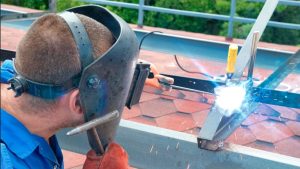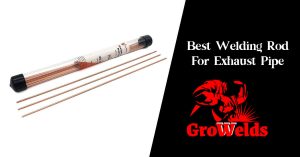Exhaust pipes are designed to carry exhaust fumes away from the engine, but they can develop holes or cracks that allow those fumes back into your vehicle. This creates an unpleasant odor and puts you at risk of carbon monoxide poisoning if there’s enough leakage in your car’s cabin. Fortunately, repairing an exhaust pipe doesn’t have to involve welding or any other complicated processes–all you need is some essential tools and supplies (which may already be in your garage). Here’s how:
How to fix the exhaust pipe without welding?
You can fix the exhaust pipe without welding.
The fumes from the exhaust are toxic and can be lethal to inhale, so you should only use this as a short-term fix while waiting for your car to be repaired or replaced.
You can also try wrapping the pipe with fiberglass tape and then covering it with heat-resistant material like fiberglass cloth or aluminum foil, but this may not last long enough for you to fix your car.
Exhaust fumes can be lethal to inhale.
Exhaust fumes can contain toxic gases that are lethal to inhale. The more you breathe them in, the more your body will suffer from the damage they cause. The following are just some of the health problems exhaust fumes can cause:
- Headaches and nausea
- Lung damage (including bronchitis)
- Cancer (especially lung and throat cancer)
Use exhaust wrap only as a short-term fix.
Exhaust wrap is a quick fix, but it’s not permanent. Use exhaust wrap only as a short-term solution for your exhaust leak. If you have to get home or to the repair shop immediately, use the exhaust wrap to get there.
Once you’ve arrived at your destination and pulled into a parking spot, remove whatever remains of the old exhaust pipe and replace it with a new one before reattaching it to your car’s muffler system.
Also, wrap the pipe with fiberglass tape.
It is also wrapping the pipe with fiberglass tape.
- Wrap the pipe with fiberglass tape rated for temperatures up to 1,400 degrees Fahrenheit (760 Celsius).
- Wrap the tape around the line and overlap it by half.
- Use a clean cloth to remove any excess glue before welding or cutting your exhaust system apart again!
Another option for repairing a leaky exhaust is to use exhaust putty.
If you’re not looking to spend money on replacement parts, exhaust putty is an easy and cost-effective way to repair your leaking exhaust pipe.
Exhaust putty comes in two varieties: one for repairing mufflers and catalytic converters and another for repairing the pipes themselves. Both types of putty consist of a sticky substance that hardens when exposed to heat. You can use them to fill holes in your exhaust system that have been chipped or worn away by driving over potholes or maintenance hole covers (don’t worry–it won’t leave residue). You’ll need some patience while applying the product because it takes time to cure properly before being able to withstand any pressure placed on top of it; once cured, this stuff will hold strong through even high temperatures!
Look for an exhaust sealant or muffler repair putty rated for temperatures up to 1,400 degrees.
You’ll want to look for an exhaust sealant or muffler repair putty rated for temperatures up to 1,400 degrees. Check the temperature rating on the product before using it, as some products are only rated to 900 degrees, and others are rated up to 1,500 degrees.
If you’re working with an older vehicle and need access to these types of specialized tools in your garage or shop, there are still ways you can repair your exhaust pipe without welding it back together. See also How to Use JB Weld – 5 Steps of How to Use It, How to Stick Weld – Basics for Beginners Guide
Using the right tools and following the instructions is critical to adequately repairing your exhaust pipe.
You will need a torch, pliers, and wrench to repair your exhaust pipe.
The first step is to heat the area where you want to make your repair. You can use a propane torch or apply heat from another source, such as an electric heater or stove burner. Once the metal is hot enough (but not too hot), use the pliers to hold it steady while using your wrench as needed.
Conclusion
Now that you know how to fix exhaust pipes without welding, you’ll be able to make repairs independently. For more information on how this process works, check out our blog post: How To Fix An Exhaust Pipe Without Welding.
Note: ElectroWeld is reader-supported. If you click a link and buy something we may receive a small commission at no extra cost to you., learn more on disclaimer.

Walton M. Edwards was born in 1994 in a coal mining town, he has worked as a welder, a hardware salesman, and as a pipe fitter and has been employed as a laborer for about fifty years. Walton is a native of Wabash County in Indiana, but he now resides in Bloomington, Indiana.




